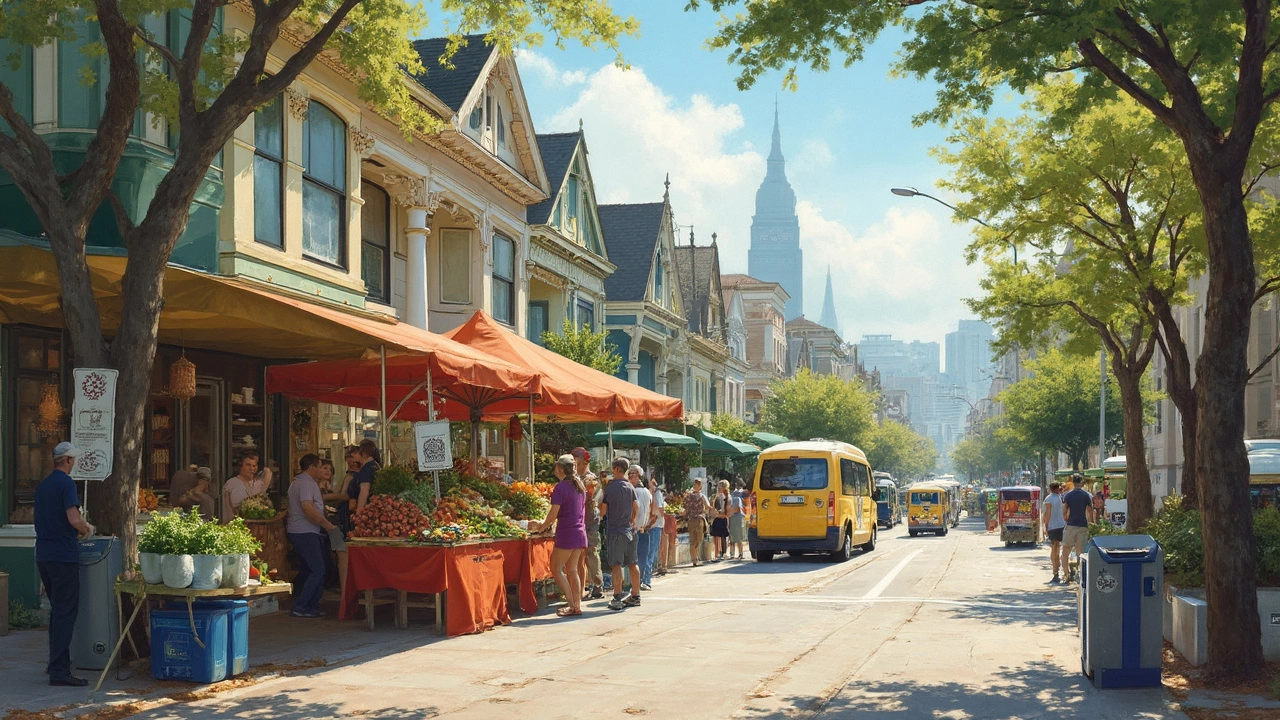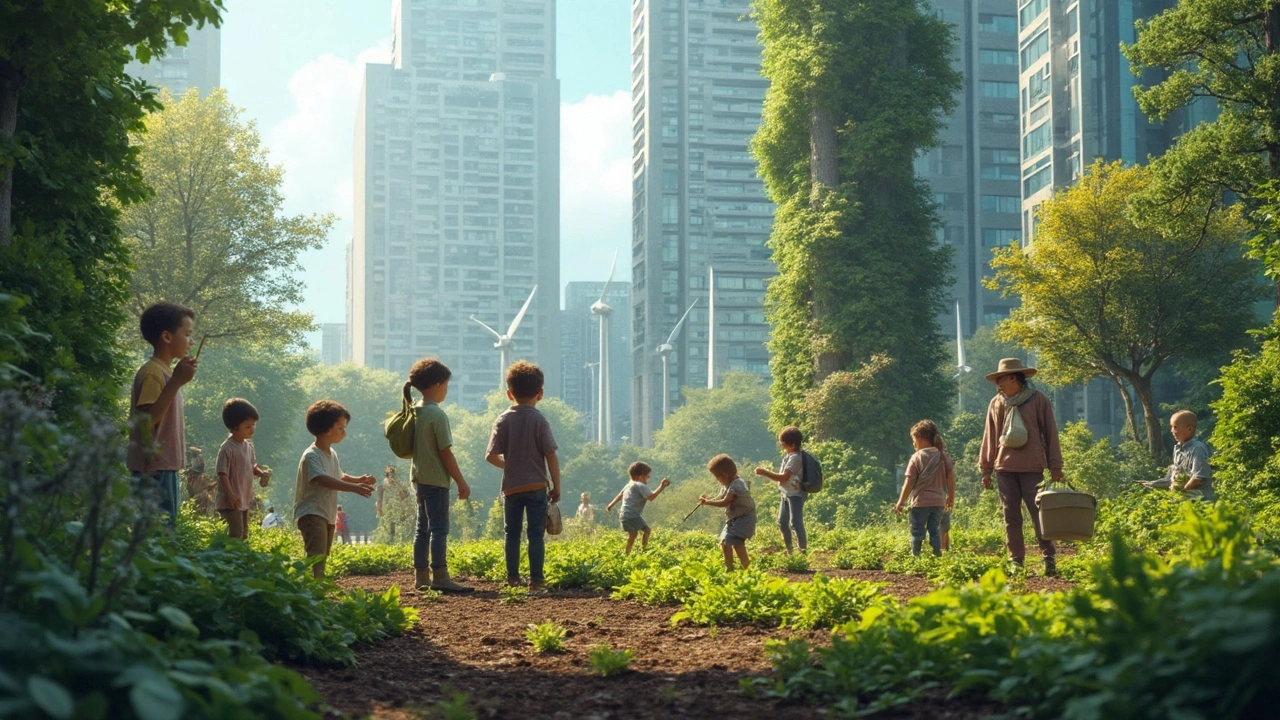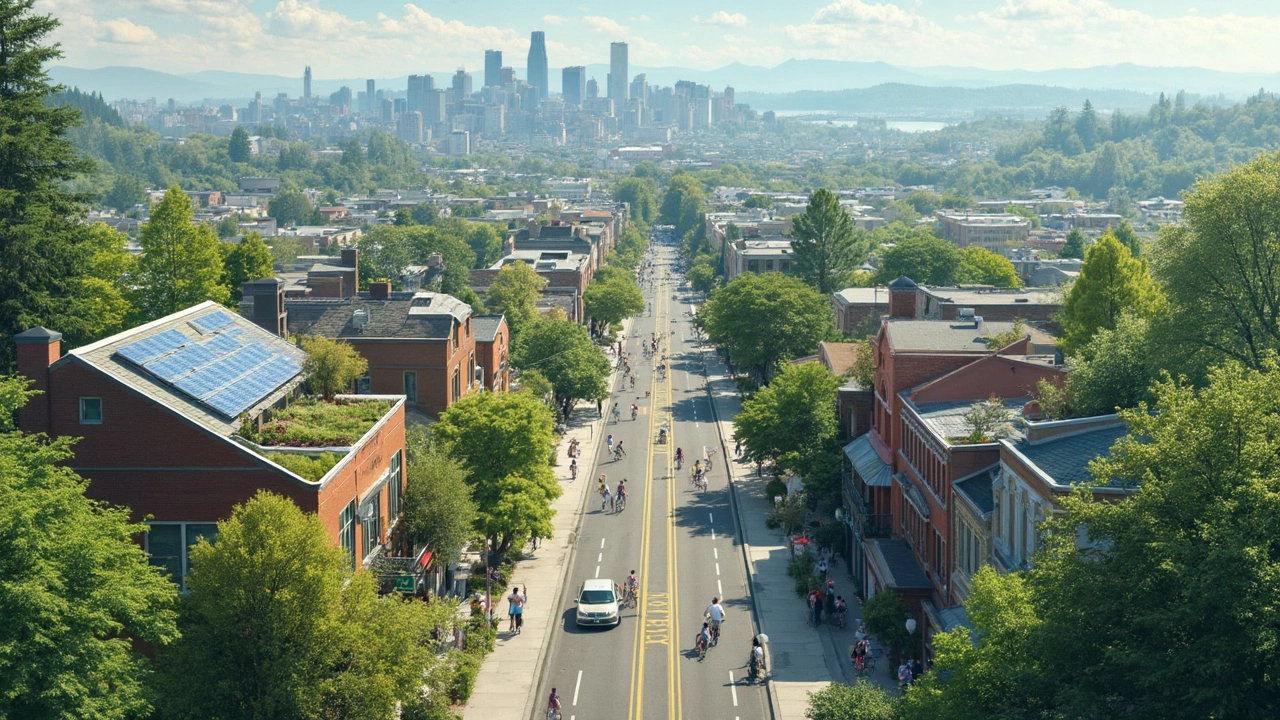If you told someone in the 90s that cities in the US would one day boast wind-powered city halls, food waste police, and forests growing on old railways, you’d probably have gotten a funny look. Yet today, competition is fierce for the title of the most eco-friendly city in America. It’s not just a PR stunt—city leaders are meeting public demand for clean air, green space, and better quality of life. But only one can take the crown for being miles ahead when it comes to urban sustainability.
The Greenest Pick: Why Portland, Oregon Tops the List
Let’s stop dancing around it. Portland, Oregon, is often called the “greenest” city in the United States, and not just because its parks are lush. It’s like they made it their life’s mission to out-green every other place in America. City policies here are built on a low-carbon blueprint. The city government runs on 100% renewable electricity (no big deal, just completely switched over in 2020). The public transportation is rocking a full fleet of electric buses and light rail systems, which are clean, cheap, and easy to use—no need for a car. Bike lanes crisscross the city—over 385 kilometers’ worth—making it normal to cycle to work or just cruise for coffee. In fact, almost 7% of people in Portland commute by bike, compared to the US national average of less than 1%.
Food waste? Portland took that challenge personally. Residents separate food scraps at home, which the city collects and turns into compost. Businesses get fined for skipping recycling. Plastics are a constant target; the city banned plastic straws, utensils, and foam containers even before Starbucks jumped on the bandwagon. And since 2017, you’ve had to pay for paper bags at checkout, making “forgetting your reusable bag” a citywide embarrassment. The energy grid is so green, you won’t see many coal-fired smokestacks. More than half their electricity comes from renewable resources like wind, hydro, and solar, which is way above the US average of about 22%. Even homes and businesses get incentives for solar panels, efficient appliances, and energy-saving retrofits.
Trees rule the city: there’s a 30% canopy covering Portland, which cleans up air pollution and keeps temperatures reasonable during those recent record heatwaves. Entire city blocks turn into urban gardens in the summer, and the famous Forest Park inside city limits is one of the largest urban forests in the country. They take green space so seriously that you’re always within a 10-minute walk of a park, thanks to careful city planning. Their urban growth boundary law means Portland can’t just sprawl forever, protecting farmlands and forests along the borders while keeping the city compact, walkable, and alive with urban life.
What truly puts Portland above the rest, though, is how sustainability infects every aspect of daily life. Cafes donate leftover pastries to food pantries. Breweries hand over spent grain to local farms for animal feed. Schools teach climate change basics from grade one. Even the city’s job growth is focused on “clean tech” and environmental science, proving that going green can put money in your pocket, not just a nice glow in your conscience.
Here’s a quick look at Portland’s shortlist of eco credentials:
| Eco Measure | Portland’s Stat | US Average |
|---|---|---|
| Renewable Electricity Use | 55% | 22% |
| Bike Commuting Rate | 6.8% | 0.6% |
| Tree Canopy Coverage | 30% | 19% |
| Access to Parks (10-min walk) | 99% | 55% |

Not Just Portland: Other Eco-Friendly Cities Making an Impact
Sure, Portland often comes out on top, but other cities give it a run for its compost. Take San Francisco. Their waste diversion program is legendary—they divert about 80% of their trash away from landfills through recycling and composting, which is nearly unheard of. Buildings are required to be LEED-certified, and the city cracks down hard on single-use plastics from shopping bags to water bottles. Public transport’s everywhere (the BART system is massive), and electric ferries even cross the bay. They also have the country’s best rates of solar panel installation per capita on homes.
Over in Minneapolis, there’s a different vibe. The winters are brutal, but that’s made them even tougher about heating efficiency and renewable energy. Wind turbines dot the skyline, while most downtown buildings use district heating, which is way more efficient than everyone running their own furnace. Minneapolis’s bike-share system runs year-round, snow or shine. Urban farming is big—the city supports rooftop gardens and community plots, with policies aimed at getting healthy, local food to everyone, not just the wealthy. It’s also a city packed with clean lakes—there are 23 within the city limits, all protected by strict pollution and conservation laws.
Now, don’t sleep on Seattle either. They’re running city buses on renewable diesel, powering homes with hydroelectricity from mountain rivers, and have a network of urban trails weaving through forests and coastline. Rain gardens line suburban streets to suck up stormwater and filter out pollutants before they hit Puget Sound. The city’s “Green Factor” program forces developers to plant trees, climbable vines, and living roofs on new buildings. The tech boom here has also turned sustainability into a badge of pride—think electric car chargers everywhere, business bike incentives, and even carbon-neutral office towers.
What do Chicago, Austin, and New York have in common? Each has a signature sustainability campaign. Chicago turned abandoned industrial yards into the 270-acre Millennium Park and runs a citywide green roof program. Austin, Texas, is all about clean energy, boasting the largest municipal solar farm in the nation and a huge investment in electric buses. New York doesn’t get enough credit, either. Walkability is built in. The High Line—a railway-turned-park—is a masterclass in urban greening, and every yellow cab is mandated to go hybrid or electric by 2030.
Curious about how your city stacks up? There are national studies every year from groups like the American Council for an Energy-Efficient Economy (ACEEE) and the Green City Index, so you can see stats and rankings for dozens of US cities. Criteria include air quality, sustainable transport, renewables, waste, water management, and public green space. While the top picks change every few years, the contenders above rarely fall far from the top 10.
Below is a quick comparison of some of these eco-friendly cities and their green stats:
| City | Waste Diversion Rate | Bike Score | Parks per Capita | Renewable Energy Use |
|---|---|---|---|---|
| Portland, OR | 72% | 82 | 2.6 | 55% |
| San Francisco, CA | 80% | 75 | 3.1 | 48% |
| Minneapolis, MN | 65% | 81 | 2.8 | 44% |
| Seattle, WA | 56% | 70 | 2.2 | 52% |
| Austin, TX | 42% | 54 | 2.3 | 38% |

Small Changes, Big Impact: How You Can Live Greener in Any City
Maybe you don’t live in the Pacific Northwest, and your city doesn’t hand out compost bins with the morning mail. That doesn’t mean you’re stuck with a high carbon footprint. Small changes add up fast, especially when millions of people start making them. Start by switching your commute—try cycling one day a week, or hop on public transport if it’s at all possible. You’d be shocked at how much CO2 you’ll keep out of the air. If biking to work sounds nuts where you live, look into e-bikes; they’re getting cheaper, and they flatten out hills like nothing else.
What you eat matters, too. Cities like Portland and San Francisco have all sorts of farmer’s markets year-round, but even in less famous places, buying local vegetables or bread cuts down transport pollution massively. Cut down on meat for a week, or try sustainable seafood. Join a community garden, even if it’s just a shared plot on your apartment roof. Grow some herbs on a balcony—they’re the gateway drug to greener living (and fresh basil makes everything better).
Heating and cooling your home is most people’s biggest environmental hit. Insulate. Draft-proof. Switch to LED bulbs—they use a quarter the energy and last years longer. Consider a smart thermostat if you can afford one. If you rent, ask your landlord about energy upgrades—laws are starting to favor renters on this, especially in progressive cities.
Water use is sneaky. The average American uses 82 gallons a day just at home. Cut back by fixing leaks, installing low-flow showerheads, and turning off the tap while brushing your teeth. Collect rainwater if you can—many cities subsidize barrels. It might sound small, but these tweaks make a visible difference to both your bill and your city’s overall water stress.
Waste and recycling habits are huge. Cut back on packaging. Ditch plastic where you can—reusable bottles, bags, and containers are everywhere these days. If your city doesn’t recycle food scraps or compost, set up a tiny worm bin under the sink or look for community compost drop-offs. Electronics? Never toss them in the trash. There are collection days and stores that take old gadgets for responsible recycling.
If you want to level up, look for local activist groups, green startups, or environmental volunteering opportunities. Get involved—it’s not just for “eco people.” Cities start changing when regular folks make noise, vote green, or even just turn up at community meetings demanding new bus stops or native trees in the park. Green living isn’t about being perfect; it’s about everyone hacking away at a big problem from different angles, until eco-friendly feels as normal as morning coffee.
Here are a few power moves you can put into action, wherever you call home:
- Consolidate your errands to drive less and walk more
- Use public transport even once a week
- Compost your food scraps (even a little helps!)
- Switch to a green energy provider if available
- Challenge yourself and friends to a no-plastic week
- Share and repair—fix stuff instead of buying new
- Make your balcony or window box pollinator-friendly
- Push for new bike lanes or community gardens locally
The truth is, no one city gets it all right. But Portland has set a high bar, and dozens of others are nipping at its heels. Cities are like living experiments—when they succeed, everyone copies them. If yours isn’t turning shade yet, the fastest way to fix it might just start with you. It’s not science fiction anymore. The greenest city in America might eventually be yours—if you decide to go for it.
